Salvage Series
Lockdown gave us all more time to focus on what matters in our artwork.
I continued to push on and really look at what interested me in my chosen subject of boats and boat yards.Every day I walked to my short commute to work, down the garden path to my studio, my safe space.
Sometimes it takes a long time to find what we are really searching for in our work, and then we want more, so it never stops! Lockdown enabled me to just keep experimenting. I wanted my work to excite me – difficult in a time when were all feeling pretty upset and afraid – I got some twinkles of ‘Yes! I am on the right track,’ but generally, I just kept going.
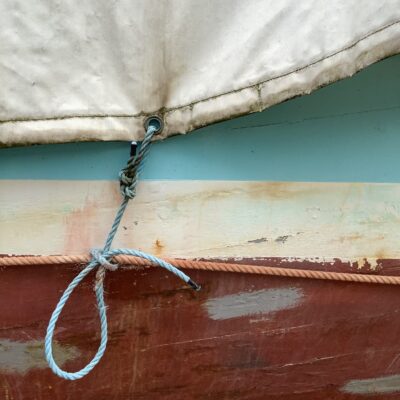
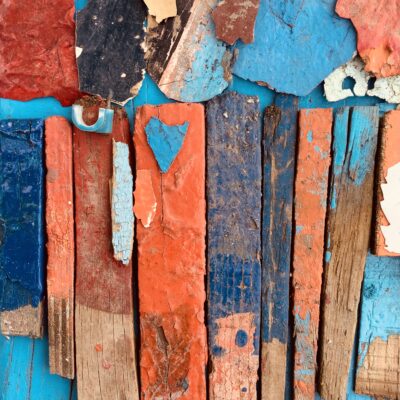
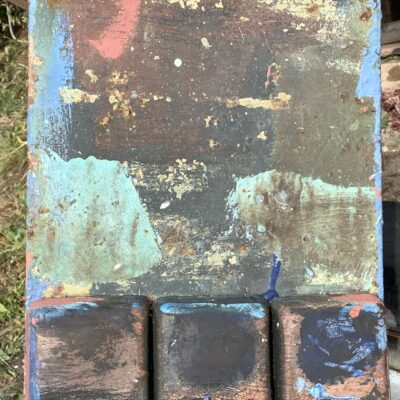
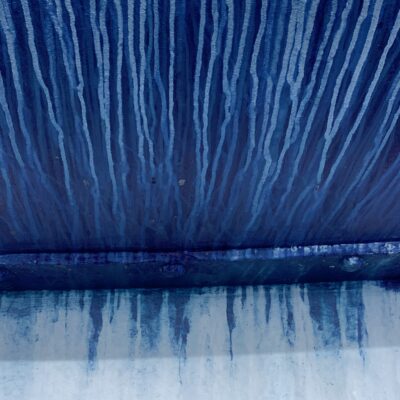
I knew that my subject was connected to my childhood spent roaming free around a sailing club on the Yorkshire coast. Later, in my late twenties I also worked and lived on sailing yachts in Greece and Turkey. I felt perfectly at home on the sea, but I loved the refit at the beginning, and the layup at the end of the season just as much as the sailing itself. It is only now that I realise how important all the boat fixings were to me – the sails, ropes, covers, cleats, shackles, sheets, spinnakers and tools, and how we assembled the boats and finished them off with sanding, painting, antifouling, varnish and polish, much like a collage painting.
I loved the way each boat part connected to the next, and had to run smoothly. I also noticed how shiny gloss paint and fibreglass would lie next to the rough wood of the boat cradles and wooden jetties. The cradles and the wooden chocks would be splattered with accidental paint marks that made mini abstracts.
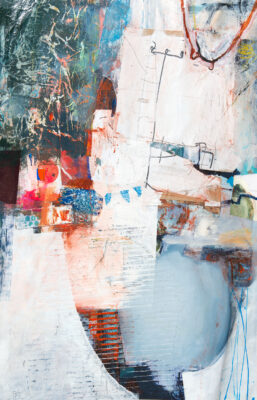
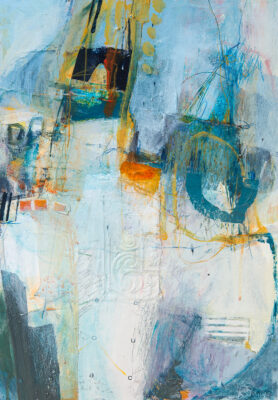
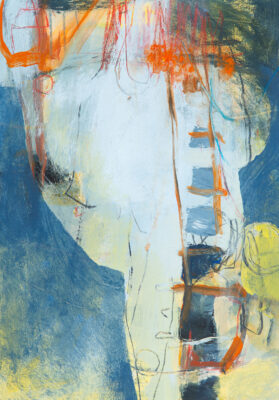
Over time, I have come to realise that it is the physicality of the materials that I use that excites me, more than a visual representation of something. Gradually my boat/harbour paintings have become more abstracted, but with some recognisable parts to lead the viewer in and now this new Salvage Series moves into abstraction, with the break from boundaries and order feeling very relevant.
Paper with all its creases, folds, wrinkles and different weights and many edges will always be in my work. At the beginning of this series, I worked from observation on location, in black and white paper collage, with some small patches of colour and clear shapes. Back in my studio I reduced the shapes even more, sometimes just to 2-3 pieces and gradually these shapes started to expand out of the rectilinear, reaching out to the sides or dangling down.
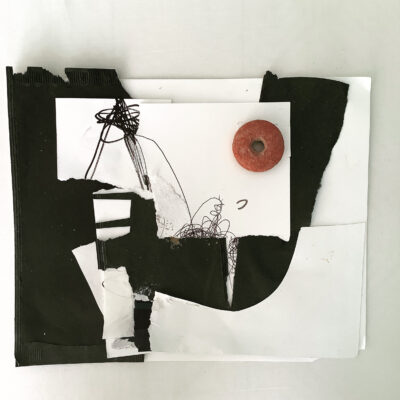


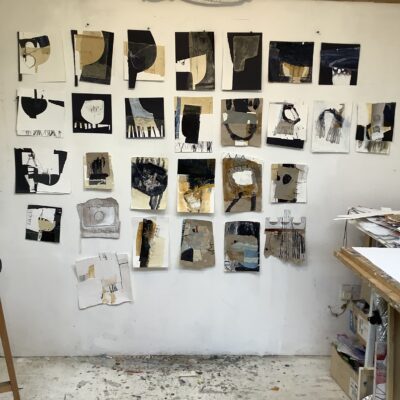
I also started using different kinds of found card packaging with all its neat cut edges, working in a series of A4 pieces; these small quirky groupings of irregular pieces soon started to converse with one another in an exciting way. Paint-dipped pieces created that thick repainted look of old fishing boats, plus an innovative use of paint/papers kept my process fresh and led me to simplify more.
Through this process of inquiry, the surface that lies beneath revealed its own story. For me it is not how paint is added – in beautiful lush brushstrokes too far removed from my hand – but how it has been added in a functional way: to decorate, protect, hide blemishes, revive, mend, patch, often over many years. It is the touch of the human hand and the accidental marks left behind from a practical fixing that play an important part. With this in mind I began to work with house paints when acrylics felt just too plastic and resistant to distressing.

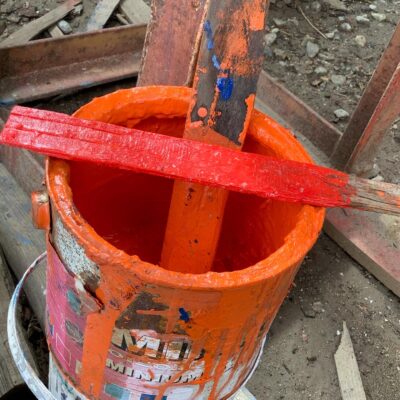 As lockdown finished, I was free to wander to my favourite boatyards, like a magpie I collected worn and painted ephemera: tiny snippets of line, offcuts of wood, sticks for stirring paint, paint tin lids and bits of gaudy plastic.I really looked at these pieces, the angle of paint on a paint stick, thick runs of paint on a discarded board, layers of colour on a paint chip, soft frayed ends of a rope, sun-bleached plastic, wind flapped fabric, each piece of jewel in its own right.
As lockdown finished, I was free to wander to my favourite boatyards, like a magpie I collected worn and painted ephemera: tiny snippets of line, offcuts of wood, sticks for stirring paint, paint tin lids and bits of gaudy plastic.I really looked at these pieces, the angle of paint on a paint stick, thick runs of paint on a discarded board, layers of colour on a paint chip, soft frayed ends of a rope, sun-bleached plastic, wind flapped fabric, each piece of jewel in its own right.
I began re-organising these fallen throwaways, my small treasures, my misshaped mishaps into new stories. As I constructed and deconstructed with paint paper and wood, more stripped back dynamic compositions revealed themselves. Each piece became cheekier and more irreverent; they jutted and spilt out, and made me smile as I abutted a flat colour with a dribbly paint stick. The square/rectangle felt too confined and bursting out felt so good, lockdown was over, I needed to expand, stretch and reach, so I began cutting up my collage and painted panels into irregular shapes. These pieces became the collage and this felt so right – all the feeling of the boat yard but no boat. Marks and edges became the subject; punchier, each kink, curve and accidental blemish accentuated and celebrated in its own right and gradually this richness of surface allowed me to leave more space in my compositions.

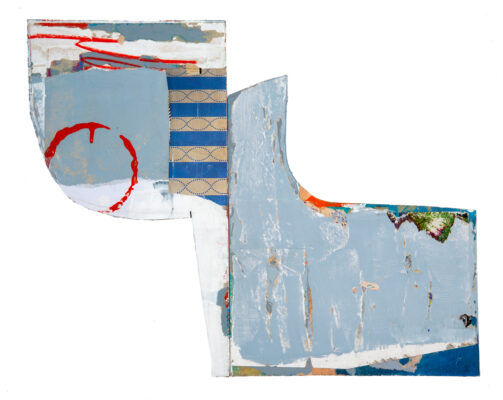 I feel that I am at an exciting new stage of my collage paintings that is rooted in my previous work.
I feel that I am at an exciting new stage of my collage paintings that is rooted in my previous work.